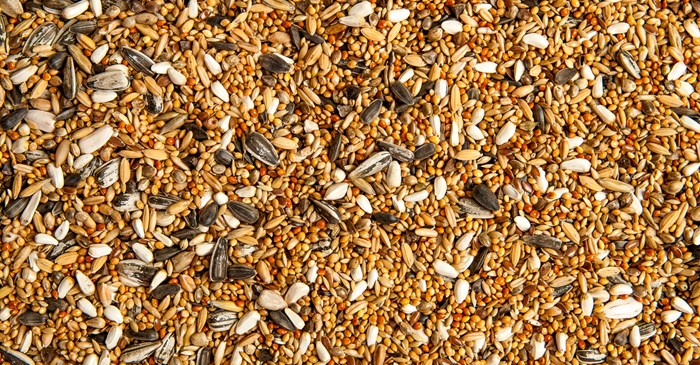If you’ve compared the prices of bird seed online and in stores, you may wonder why some companies are able to offer oversized packages of seed at lower costs than premium brands.
The answer? Some vendors fill their bags with low-cost “filler” materials to make it seem they’re providing more food at a better value. Many frequently change recipes based on purchases of surplus, unwanted, or damaged supplies. And they craftily design their packaging with stunning bird images to suggest the contents attract them.
However, the fact is that much of that filler material is of little interest to birds, so it clogs up feeders or turns into ground refuse. Different bird species are designed by nature to seek foods that will provide the maximum nutritional value, which is why they tend to ignore foods that won’t help them survive.
4 Most Common Bird Mix Fillers:
1. Red millet
While a few ground-feeding species like these round, rust- or gold-colored grains, they’re not popular with desirable species such as Cardinals, Jays, Woodpeckers, Chickadees, or Nuthatches.
Note: don’t confuse red millet with milo which looks similar but appeals to a wider variety of birds. Also, white millet is similar to its red variant but is more in demand than its counterpart.
2. Flax
These flat brown seeds may benefit humans but are seldom ingested by birds.
3. Canary grass seed
Only pet birds, House Sparrows, and a few other ground-feeding birds will bother to eat this flat beige ingredient that’s mistakenly marketed to those wishing to attract Finches and Goldfinches.
4. Wheat
Wheat is typically a last resort for the majority of backyard birds. Some low-cost seed mixes frequently contain wheat as a filler, but birds will leave it on the ground, where it is wasted.
To avoid paying for bird seed that is loaded with fillers, be sure to read the ingredient lists on each package.
Fortunately, Lyric Wild Bird Mixes can be counted on to contain only the highest quality seeds, grains, nuts, and fruit ingredients on the market, focusing on five criteria: nutritional value, taste, appearance, freshness, and sustainability.
Our no-waste philosophy ensures that every ingredient in its packages is hulled, cleaned, and sifted to be entirely consumable.
